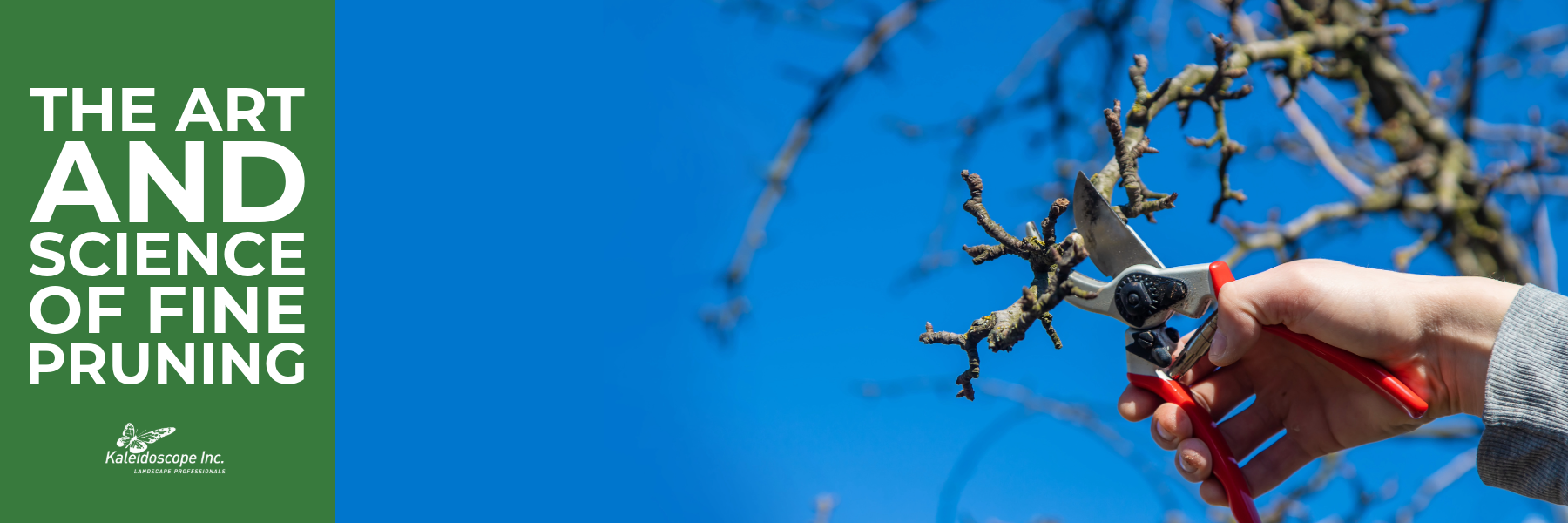The Art and Science of Fine Pruning
Elevating Your Garden’s Aesthetic and Health
Fine pruning is more than a gardening task—it's a blend of art and science that transforms your garden into a masterpiece. Whether you're shaping a prized Japanese maple or maintaining the elegance of an ornamental hedge, fine pruning requires a delicate balance between technique, timing, and an understanding of each plant's unique growth patterns. In this post, we’ll explore the essentials of fine pruning and how it can elevate both the health and beauty of your garden.
What is Fine Pruning?
Fine pruning involves the meticulous trimming of trees, shrubs, and plants to enhance their natural shape, encourage healthy growth, and ensure their long-term vitality. Unlike more aggressive pruning methods, fine pruning focuses on the careful removal of select branches to achieve a desired aesthetic while promoting the plant's overall well-being.
The Artistic Side: Shaping Your Garden
Fine pruning is a form of garden art. By selectively trimming branches, you can:
Highlight Natural Form: Each plant has its own unique shape and character. Fine pruning helps accentuate these natural forms, allowing the plant’s beauty to shine through.
Create Visual Harmony: In a well-designed garden, all elements should work together to create a cohesive look. Fine pruning allows you to shape plants so that they complement each other and the overall garden design.
Frame Views and Pathways: Strategic pruning can open up views, frame garden features, or guide the eye along pathways, enhancing the overall experience of the garden.
The Scientific Side: Promoting Plant Health
Beyond aesthetics, fine pruning plays a crucial role in maintaining plant health:
Remove Dead or Diseased Wood: Pruning out dead or diseased branches prevents the spread of disease and allows the plant to focus its energy on healthy growth.
Improve Air Circulation: Thinning out dense growth improves air circulation within the plant, reducing the risk of fungal diseases and promoting a healthier environment.
Enhance Light Penetration: Pruning helps ensure that sunlight reaches all parts of the plant, from the outer branches to the inner canopy, which is essential for photosynthesis and overall vitality.
Encourage New Growth: By removing older, unproductive branches, you stimulate the plant to produce fresh, vigorous growth that can lead to more flowers, fruits, or lush foliage.
Techniques for Mastering Fine Pruning
Understand the Plant’s Growth Habit: Before you start pruning, it’s essential to know how the plant naturally grows. Is it a fast-growing shrub, a slow-maturing tree, or a flowering perennial? Understanding this will guide your pruning decisions.
Use the Right Tools: Fine pruning requires sharp, clean tools. Hand pruners are perfect for small branches, while loppers and pruning saws are needed for larger limbs. For precision cuts, especially on delicate or ornamental plants, use sharp scissors or shears designed for fine work.
Start with the 4 D’s: Begin by removing any Dead, Diseased, Dying, Deranged. This basic step is crucial for the health of the plant and sets the stage for more detailed pruning.
Prune with Purpose: Every cut you make should have a reason. Whether you’re shaping the plant, encouraging new growth, or improving air circulation, make sure each cut contributes to the overall goal.
Prune Gradually: Fine pruning is not about making drastic changes all at once. Instead, approach it as an ongoing process, making small adjustments over time. This ensures the plant’s health and allows you to refine its shape gradually.
Respect the Plant’s Natural Form: Avoid trying to force a plant into a shape that doesn’t suit its natural growth pattern. Fine pruning should enhance the plant’s natural beauty, not fight against it.
When to Fine Prune. Timing is critical in fine pruning:
Deciduous Trees and Shrubs: The best time to prune most deciduous trees and shrubs is late winter or early spring before new growth begins. This timing allows you to see the structure of the plant and make clean cuts that will heal quickly.
Evergreens: Fine pruning of evergreens can be done in late spring or early summer. Avoid pruning in late fall, as new growth stimulated by pruning may not have time to harden off before winter.
Flowering Plants: For plants that bloom on old wood, such as azaleas or rhododendrons, prune immediately after flowering to avoid cutting off next year’s blooms. For those that bloom on new wood, prune in late winter or early spring.
Conclusion
Fine pruning is a delicate dance between art and science, requiring an understanding of plant biology, an eye for design, and a steady hand. When done correctly, it can transform your garden into a living work of art, where each plant is healthy, balanced, and beautiful. Whether you’re a seasoned gardener or just starting, mastering the art of fine pruning will take your gardening skills to the next level and ensure your garden thrives for years to come.

